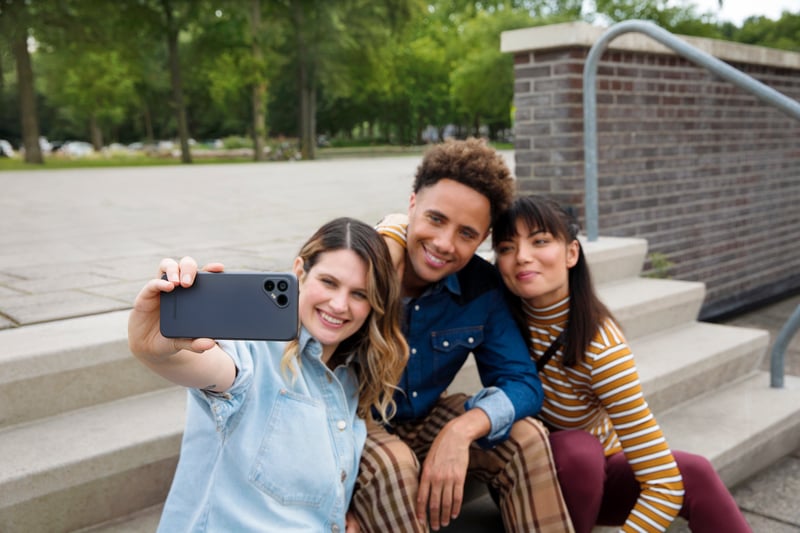Fairphone manufactures and sells fair electronics. Originating from an NGO awareness campaign about unfair practices in the electronics industry, they evolved into the leading example of sustainable smartphone development. They began creating smartphones in 2013, today they are an international company with 250.000 customers.
The idea was to get on the platform, focus on one metric and look purely at the feedback. That’s where you’ll get the most insights from. And we did that.

“In the first years we worked with a Net Promotor Score and a survey we sent to our direct customers”, tells Max Seabrooke, Customer Experience lead at Fairphone. “I started out as UX/CX lead, responsible for user experience and design. I was gathering the feedback myself, and also analyzing all of it. We learned a lot from this, but it wasn’t sustainable. People were also asking more questions about things, looking for more insights or more data. So when we kicked off our new CX vision, I already knew we needed a more sustainable way of doing this. We wanted a platform that could centralize all our customer feedback and automate as much as possible, including the analysis. That took up a big chunk of my time. Because I already showed some benefits of collecting customer feedback and getting insights, the company understood its importance.” That’s where Hello Customer came in.
“The idea was to get on the platform, focus on one metric and look purely at the feedback. That’s where you’ll get the most insights. And we did that.” Fairphone migrated their two NPS surveys - one for the onboarding phase and one for customer support interactions with agents - to the Hello Customer platform. The platform cleared the road for gathering insights efficiently and sustainably. and helps make the feedback more visual and accessible for others in the company. Later, they plan to set up more touchpoints focused around different repair journeys using the Customer Satisfaction Score and the Customer Effort Score. The combination of these metrics allows them to get feedback on many different touchpoints and improve their overall customer experience.
After looking at their feedback and current touchpoints, Fairphone is now exploring how to better promote the repairability aspects throughout both the earlier and later phases of the customer journey. “We want our customers to love using their phones longer, that goes hand-in-hand with the fact that Fairphone is always there to help. That is why repairability is a big part of our brand and feedback. We promote DIY repair and we sell affordable spare parts, but the feedback showed us that customers aren’t always aware of all the services we provide linked to this.” In other words, they were missing touchpoints. “Being able to do DIY repairs is quite empowering and it’s easy and fast to do. You don’t need to send your phone away to anyone. There are always benefits there, but we just don’t clearly talk about it.”
Therefore they’re currently testing the impact of being more explicit about the repair journey in their marketing. Looking at feedback on topics like this and working on improving them, also creates new opportunities. “There are tons of other opportunities related to the theme of reparability. Those opportunities create new branded touchpoints with our customers to keep them engaged and to keep Fairphone top of mind.”

As a sustainability-driven company, Fairphone aims to create long-lasting products. Part of that longevity is the options their repair journey offers, but another part is improving their existing products. They released their latest version, the Fairphone 4, in the fall of 2021. To create this improved product, they needed to know what customers thought of the previous models. During the first years of Fairphone, Max used the NPS to find aspects to improve. Changing to a platform and working on customer experience with different teams allows him to use both feedback and employees to improve the products. “I rally everyone behind it to understand what's going on and motivate and empower them to actually deliver improvements themselves, with that longer-term vision in mind as well.”
One part of the Fairphone they want to continuously improve was the camera. This is a topic much talked about by customers, but not all feedback was useful. However, some of the customer feedback they received specifically talked about aspects of the camera. “We have some quite specific starting points of what to prioritize on the camera. I might even - because in this phase it's a very objective and subjective topic - create a separate survey, really specifically asking a question of satisfaction around just the camera.” Thanks to customer feedback and asking the right questions while working back and forth with the customers on improving the product, Fairphone knows what to improve to keep their customers happy.
When Fairphone’s CEO announced in 2020 that they’d be working towards customer centricity in the next few years, the employees started wondering what customer centricity means for Fairphone. How do they become customer-centric? And aren’t they customer-centric already? “It’s good to start asking these questions.” They worked on getting answers for them as well by organizing workshops to get people from the company together to tackle this goal structurally. Since the creation of the new CX vision, Max and his colleagues have been constantly working to keep it top of mind with the whole company. “There were disciplines from across the company getting together in workshops and sharing the same vision. It was really a collaborative effort.”
This shows that aside from having a customer-centric approach, Fairphone also has an employee-centric approach. “The people who work directly with customers but also everyone who’s more involved in the operational side of things really appreciate hearing what’s happening and where we want to go from here. Especially the customer service team, they are big contributors to the improvements Fairphone can make since they get to hear directly from the customer when something is wrong.” The company also tries to focus on closing the loop both internally and externally. “Customer service agents work on that latter part with customers. Their help and assistance can resolve issues before feedback is given and can affect our metrics.”
Reach out today and discover how we can help you achieve your business goals.